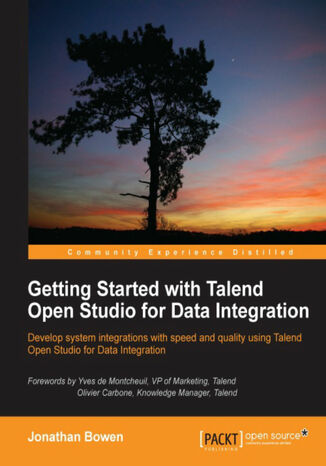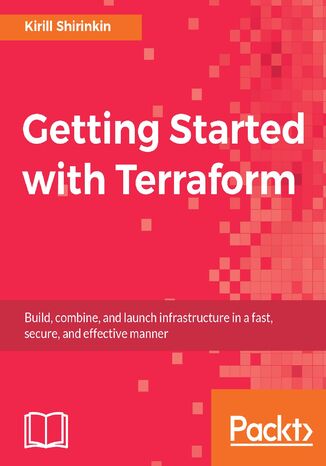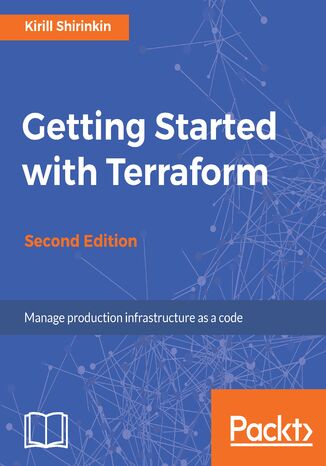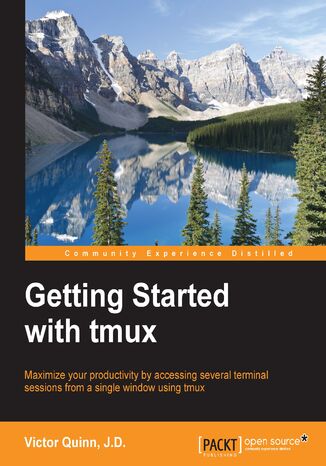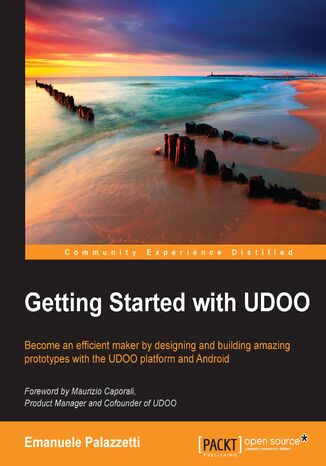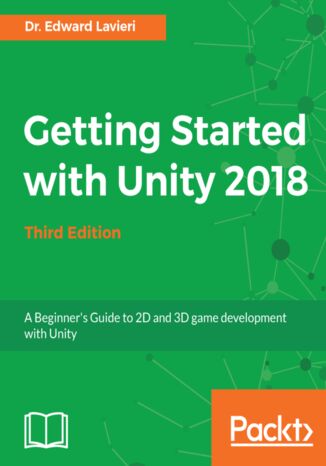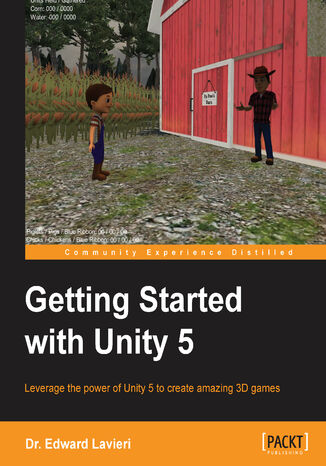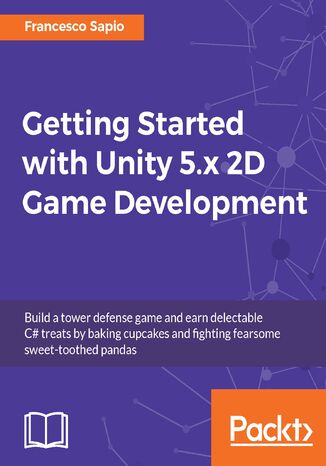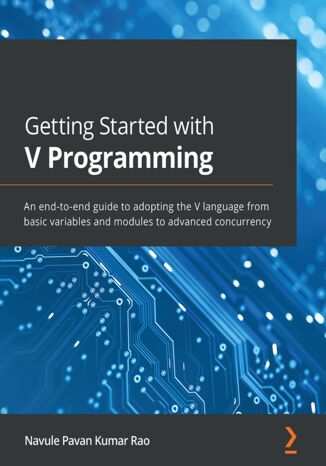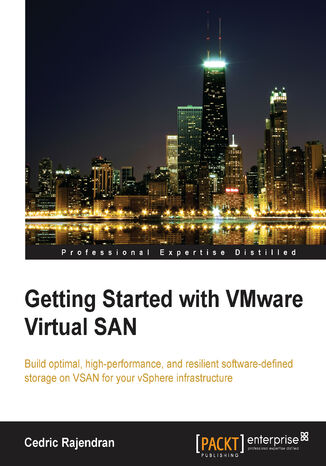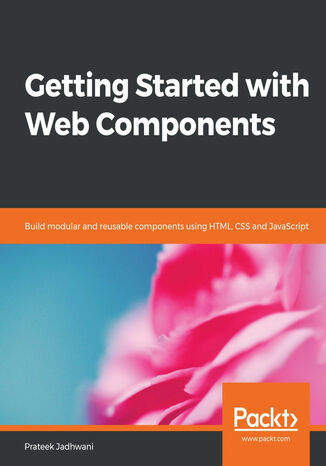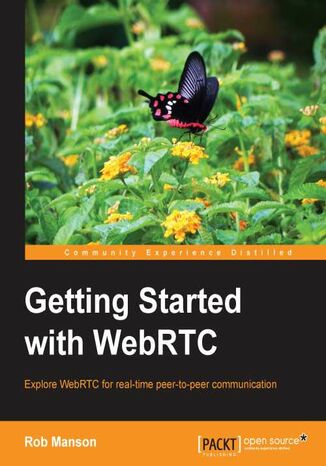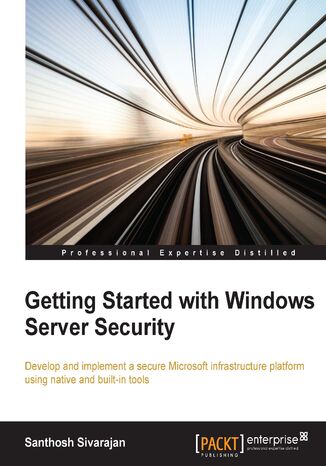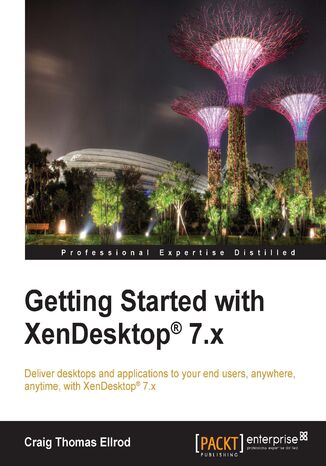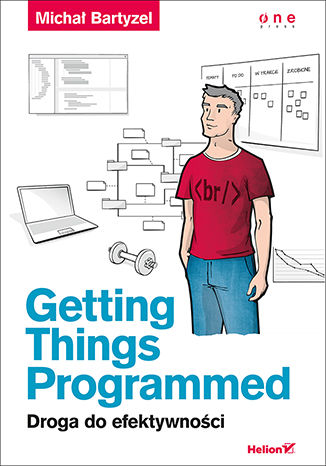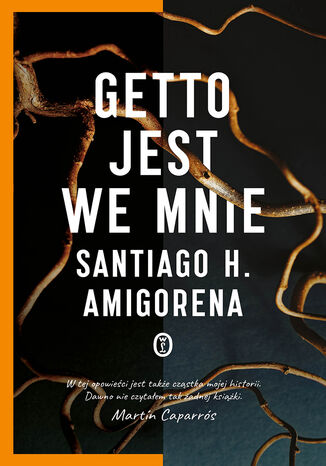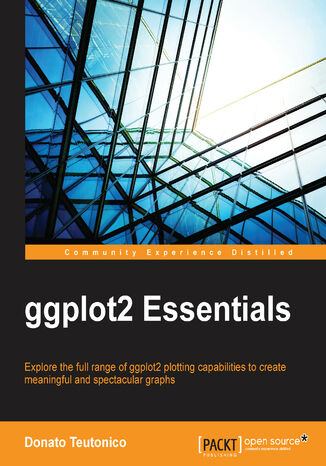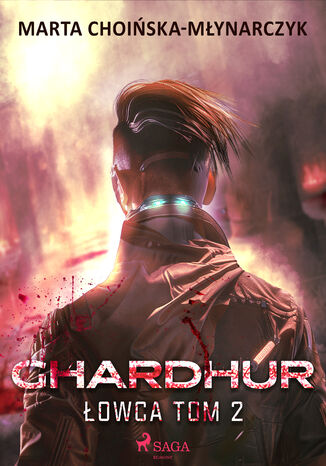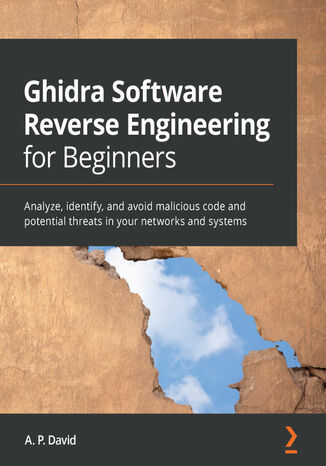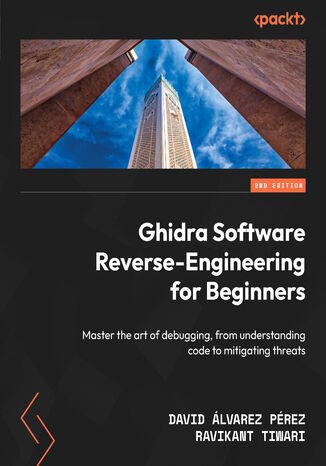Kategorien
E-Books
-
Wirtschaft
- Bitcoin
- Geschäftsfrau
- Coaching
- Controlling
- E-Business
- Ökonomie
- Finanzen
- Börse und Investitionen
- Persönliche Kompetenzen
- Computer im Büro
- Kommunikation und Verhandlungen
- Kleines Unternehmen
- Marketing
- Motivation
- Multimedia-Training
- Immobilien
- Überzeugung und NLP
- Steuern
- Sozialpolitik
- Handbȕcher
- Präsentationen
- Führung
- Public Relation
- Berichte, Analysen
- Geheimnis
- Social Media
- Verkauf
- Start-up
- Ihre Karriere
- Management
- Projektmanagement
- Personal (HR)
-
Für Kinder
-
Für Jugendliche
-
Bildung
-
Enzyklopädien, Wörterbücher
-
E-Presse
- Architektura i wnętrza
- Sicherheit und Gesundheit am Arbeitsplatz
- Biznes i Ekonomia
- Haus und Garten
- E-Business
- Ekonomia i finanse
- Esoterik
- Finanzen
- Persönliche Finanzen
- Unternehmen
- Fotografie
- Informatik
- HR und Gehaltsabrechnung
- Frauen
- Computer, Excel
- Buchhaltung
- Kultur und Literatur
- Wissenschaftlich und akademisch
- Umweltschutz
- meinungsbildend
- Bildung
- Steuern
- Reisen
- Psychologie
- Religion
- Landwirtschaft
- Buch- und Pressemarkt
- Transport und Spedition
- Gesundheit und Schönheit
-
Geschichte
-
Informatik
- Office-Programme
- Datenbank
- Bioinformatik
- IT Branche
- CAD/CAM
- Digital Lifestyle
- DTP
- Elektronik
- Digitale Fotografie
- Computergrafik
- Spiele
- Hacking
- Hardware
- IT w ekonomii
- Wissenschaftliche Pakete
- Schulbücher
- Computergrundlagen
- Programmierung
- Mobile-Programmierung
- Internet-Server
- Computernetzwerke
- Start-up
- Betriebssysteme
- Künstliche Inteligenz
- Technik für Kinder
- Webmaster
-
Andere
-
Fremdsprachen lernen
-
Kultur und Kunst
-
Lektüre
-
Literatur
- Anthologien
- Ballade
- Biografien und Autobiografien
- Für Erwachsene
- Drama
- Tagebücher, Memoiren, Briefe
- Epos
- Essay
- Science Fiction
- Felietonys
- Fiktion
- Humor, Satire
- Andere
- Klassisch
- Krimi
- Sachbücher
- Belletristik
- Mity i legendy
- Nobelpreisträger
- Kurzgeschichten
- Gesellschaftlich
- Okultyzm i magia
- Erzählung
- Erinnerungen
- Reisen
- Gedicht
- Poesie
- Politik
- Populärwissenschaftlich
- Roman
- Historischer Roman
- Prosa
- Abenteuer
- Journalismus
- Reportage
- Romans i literatura obyczajowa
- Sensation
- Thriller, Horror
- Interviews und Erinnerungen
-
Naturwissenschaften
-
Sozialwissenschaften
-
Schulbücher
-
Populärwissenschaft und akademisch
- Archäologie
- Bibliotekoznawstwo
- Filmwissenschaft
- Philologie
- Polnische Philologie
- Philosophie
- Finanse i bankowość
- Erdkunde
- Wirtschaft
- Handel. Weltwirtschaft
- Geschichte und Archäologie
- Kunst- und Architekturgeschichte
- Kulturwissenschaft
- Linguistik
- Literaturwissenschaft
- Logistik
- Mathematik
- Medizin
- Geisteswissenschaften
- Pädagogik
- Lehrmittel
- Populärwissenschaftlich
- Andere
- Psychologie
- Soziologie
- Theatrologie
- Teologie
- Theorien und Wirtschaftswissenschaften
- Transport i spedycja
- Sportunterricht
- Zarządzanie i marketing
-
Handbȕcher
-
Spielanleitungen
-
Professioneller und fachkundige Leitfaden
-
Jura
- Sicherheit und Gesundheit am Arbeitsplatz
- Geschichte
- Verkehrsregeln. Führerschein
- Rechtswissenschaften
- Gesundheitswesen
- Allgemeines. Wissenskompendium
- akademische Bücher
- Andere
- Bau- und Wohnungsrecht
- Zivilrecht
- Finanzrecht
- Wirtschaftsrecht
- Wirtschafts- und Handelsrecht
- Strafrecht
- Strafrecht. Kriminelle Taten. Kriminologie
- Internationales Recht
- Internationales und ausländisches Recht
- Gesundheitsschutzgesetz
- Bildungsrecht
- Steuerrecht
- Arbeits- und Sozialversicherungsrecht
- Öffentliches, Verfassungs- und Verwaltungsrecht
- Familien- und Vormundschaftsrecht
- Agrarrecht
- Sozialrecht, Arbeitsrecht
- EU-Recht
- Industrie
- Agrar- und Umweltschutz
- Wörterbücher und Enzyklopädien
- Öffentliche Auftragsvergabe
- Management
-
Führer und Reisen
- Afrika
- Alben
- Südamerika
- Mittel- und Nordamerika
- Australien, Neuseeland, Ozeanien
- Österreich
- Asien
- Balkan
- Naher Osten
- Bulgarien
- China
- Kroatien
- Tschechische Republik
- Dänemark
- Ägypten
- Estland
- Europa
- Frankreich
- Berge
- Griechenland
- Spanien
- Niederlande
- Island
- Litauen
- Lettland
- Mapy, Plany miast, Atlasy
- Miniführer
- Deutschland
- Norwegen
- Aktive Reisen
- Polen
- Portugal
- Andere
- Przewodniki po hotelach i restauracjach
- Russland
- Rumänien
- Slowakei
- Slowenien
- Schweiz
- Schweden
- Welt
- Türkei
- Ukraine
- Ungarn
- Großbritannien
- Italien
-
Psychologie
- Lebensphilosophien
- Kompetencje psychospołeczne
- zwischenmenschliche Kommunikation
- Mindfulness
- Allgemeines
- Überzeugung und NLP
- Akademische Psychologie
- Psychologie von Seele und Geist
- Arbeitspsychologie
- Relacje i związki
- Elternschafts- und Kinderpsychologie
- Problemlösung
- Intellektuelle Entwicklung
- Geheimnis
- Sexualität
- Verführung
- Aussehen ind Image
- Lebensphilosophien
-
Religion
-
Sport, Fitness, Diäten
-
Technik und Mechanik
Hörbücher
-
Wirtschaft
- Bitcoin
- Geschäftsfrau
- Coaching
- Controlling
- E-Business
- Ökonomie
- Finanzen
- Börse und Investitionen
- Persönliche Kompetenzen
- Kommunikation und Verhandlungen
- Kleines Unternehmen
- Marketing
- Motivation
- Immobilien
- Überzeugung und NLP
- Steuern
- Sozialpolitik
- Handbȕcher
- Präsentationen
- Führung
- Public Relation
- Geheimnis
- Social Media
- Verkauf
- Start-up
- Ihre Karriere
- Management
- Projektmanagement
- Personal (HR)
-
Für Kinder
-
Für Jugendliche
-
Bildung
-
Enzyklopädien, Wörterbücher
-
E-Presse
-
Geschichte
-
Informatik
-
Andere
-
Fremdsprachen lernen
-
Kultur und Kunst
-
Lektüre
-
Literatur
- Anthologien
- Ballade
- Biografien und Autobiografien
- Für Erwachsene
- Drama
- Tagebücher, Memoiren, Briefe
- Epos
- Essay
- Science Fiction
- Felietonys
- Fiktion
- Humor, Satire
- Andere
- Klassisch
- Krimi
- Sachbücher
- Belletristik
- Mity i legendy
- Nobelpreisträger
- Kurzgeschichten
- Gesellschaftlich
- Okultyzm i magia
- Erzählung
- Erinnerungen
- Reisen
- Poesie
- Politik
- Populärwissenschaftlich
- Roman
- Historischer Roman
- Prosa
- Abenteuer
- Journalismus
- Reportage
- Romans i literatura obyczajowa
- Sensation
- Thriller, Horror
- Interviews und Erinnerungen
-
Naturwissenschaften
-
Sozialwissenschaften
-
Populärwissenschaft und akademisch
- Archäologie
- Philosophie
- Wirtschaft
- Handel. Weltwirtschaft
- Geschichte und Archäologie
- Kunst- und Architekturgeschichte
- Kulturwissenschaft
- Literaturwissenschaft
- Mathematik
- Medizin
- Geisteswissenschaften
- Pädagogik
- Lehrmittel
- Populärwissenschaftlich
- Andere
- Psychologie
- Soziologie
- Teologie
- Zarządzanie i marketing
-
Handbȕcher
-
Professioneller und fachkundige Leitfaden
-
Jura
-
Führer und Reisen
-
Psychologie
- Lebensphilosophien
- zwischenmenschliche Kommunikation
- Mindfulness
- Allgemeines
- Überzeugung und NLP
- Akademische Psychologie
- Psychologie von Seele und Geist
- Arbeitspsychologie
- Relacje i związki
- Elternschafts- und Kinderpsychologie
- Problemlösung
- Intellektuelle Entwicklung
- Geheimnis
- Sexualität
- Verführung
- Aussehen ind Image
- Lebensphilosophien
-
Religion
-
Sport, Fitness, Diäten
-
Technik und Mechanik
Videokurse
-
Datenbank
-
Big Data
-
Biznes, ekonomia i marketing
-
Cybersicherheit
-
Data Science
-
DevOps
-
Für Kinder
-
Elektronik
-
Grafik / Video / CAX
-
Spiele
-
Microsoft Office
-
Entwicklungstools
-
Programmierung
-
Persönliche Entwicklung
-
Computernetzwerke
-
Betriebssysteme
-
Softwaretest
-
Mobile Geräte
-
UX/UI
-
Web development
-
Management
Podcasts
Talend Open Studio for Data Integration (TOS) is an open source graphical development environment for creating custom integrations between systems. It comes with over 600 pre-built connectors that make it quick and easy to connect databases, transform files, load data, move, copy and rename files and connect individual components in order to define complex integration processes.Getting Started with Talend Open Studio for Data Integration illustrates common uses and scenarios in a simple, practical manner and, building on knowledge as the book progresses, works towards more complex integration solutions.TOS is a code generator and so does a lot of the heavy liftingù for you. As such, it is a suitable tool for experienced developers and non-developers alike. You'll start by learning how to construct some common integrations tasks ñ transforming files and extracting data from a database, for example. These building blocks form a toolkitù of techniques that you will learn how to apply in many different situations.By the end of the book, once complex integrations will appear easy and you will be your organization's integration expert!Best of all, TOS makes integrating systems fun!
Getting Started with Terraform. Infrastructure automation made easy
Terraform is a tool used to efficiently build, configure, and improve production infrastructure. It can manage existing infrastructure as well as create custom in-house solutions. This book shows you when and how to implement infrastructure as a code practices with Terraform. It covers everything necessary to set up complete management of infrastructure with Terraform, starting with the basics of using providers and resources. This book is a comprehensive guide that begins with very small infrastructure templates and takes you all the way to managing complex systems, all using concrete examples that evolve over the course of the book. It finishes with the complete workflow of managing a production infrastructure as code – this is achieved with the help of version control and continuous integration. At the end of this book, you will be familiar with advanced techniques such as multi-provider support and multiple remote modules.
Getting Started with Terraform. Manage production infrastructure as a code - Second Edition
Terraform is a tool used to efficiently build, configure, and improve the production infrastructure. It can manage the existing infrastructure as well as create custom in-house solutions. This book shows you when and how to implement infrastructure as a code practices with Terraform. It covers everything necessary to set up the complete management of infrastructure with Terraform, starting with the basics of using providers and resources. It is a comprehensive guide that begins with very small infrastructure templates and takes you all the way to managing complex systems, all using concrete examples that evolve over the course of the book. The book ends with the complete workflow of managing a production infrastructure as code—this is achieved with the help of version control and continuous integration. The readers will also learn how to combine multiple providers in a single template and manage different code bases with many complex modules. It focuses on how to set up continuous integration for the infrastructure code.The readers will be able to use Terraform to build, change, and combine infrastructure safely and efficiently.
The Unity game engine has revolutionized the gaming industry with its complete set of intuitive tools and rapid workflows, which can be used to create interactive 3D content. With Unity, you can scaffold your way from the basics and make make stunning interactive games. This book will guide you through the entire process of creating a 3D game, from downloading the Unity game engine to publishing your game. It not only gives you a strong foundation, but puts you on the path to game development. Beginning with an overview of the Unity engine and its interface, you will walk through the process of creating a game environment and learn how to use built-in assets, as well as assets created with third-party 3D modeling tools such as Blender. Moving on, you will create custom scripts to control non-player character behaviors and gameplay. You will master exciting concepts such as Heads-Up-Displays, mini-maps, game navigation, sound effects, and lighting effects. Next, you’ll learn how to create your first VR experience, right from setting up the project to image effects. You'll be familiarized with all the tools that Unity has to offer to create your own immersive VR experiences. Each section is a stepping stone toward the completion of the final game. By the end of the book, you'll have learned advanced topics such as cross-platform considerations which enable your games to run on multiple platforms.
Want to get started in the world of 2D game development with Unity? This book will take your hand and guide you through this amazing journey to let you know exactly what you need to build the games you want to build, without sacrificing quality. You will build a solid understanding of Unity 5.x, by focusing with the embedded tools to develop 2D games. In learning about these, along with accurate explanations and practical examples, you will design, develop, learn how to market and publish a delectable Tower Defense game about cupcakes versus pandas.Each chapter in this book is structured to give you a full understanding on a specific aspect of the workflow pipeline. Each of these aspects are essential for developing games in Unity. In a step-by-step approach, you will learn about each of the following phases: Game Design, Asset Importing, Scripting, User Interfaces, Animations, Physics, Artificial Intelligence, Gameplay Programming, Polishing and Improving, Marketing, Publishing and much more.This book provides you with exercises and homework at the end of each chapter so that you can level up your skills as a Unity game developer. In addition, each of these parts are centered on a common point of discussion with other learners just like you. Therefore, by sharing your ideas with other people you will not only develop your skills but you will also build a network.
A new language on the block, V comes with a promising set of features such as fast compilation and interoperability with other programming languages. This is the first book on the V programming language, packed with concise information and a walkthrough of all the features you need to know to get started with the language.The book begins by covering the fundamentals to help you learn about the basic features of V and the suite of built-in libraries available within the V ecosystem. You'll become familiar with primitive data types, declaring variables, arrays, and maps. In addition to basic programming, you'll develop a solid understanding of the building blocks of programming, including functions, structs, and modules in the V programming language.As you advance through the chapters, you'll learn how to implement concurrency in V Programming, and finally learn how to write test cases for functions. This book takes you through an end-to-end project that will guide you to build fast and maintainable RESTful microservices by leveraging the power of V and its built-in libraries.By the end of this V programming book, you'll be well-versed with the V programming language and be able to start writing your own programs and applications.
Web Components are a set of APIs that help you build reusable UI modules that can operate in any modern browser using just Vanilla JavaScript. The power of Web Components lies in their ability to build frontend web applications with or without web frameworks.With this practical guide, you will understand how Web Components can help you build reusable UI components for your modern web apps. The book starts by explaining the fundamentals of Web Components' design and strategies for using them in your existing frontend web projects. You will also learn how to use JavaScript libraries such as Polymer.js and Stencil.js for building practical components. As you progress, you will build a single-page application using only Web Components to fully realize their potential. This practical guide demonstrates how to work with Shadow DOM and custom elements to build the standard components of a web application. Toward the end of the book, you will learn how to integrate Web Components with standard web frameworks to help you manage large-scale web applications.By the end of this book, you will have learned about the capabilities of Web Components in building custom elements and have the necessary skills for building a reusable UI for your web applications.
WebRTC delivers web-based real-time communication and is set to revolutionize our view of what the Web really is. Streaming audio and video from browser to browser, as well as opening raw access to the camera and microphone, is already creating a whole new dynamic web. WebRTC also introduces real-time data channels that will allow interaction with dynamic data feeds from sensors and other devices. This really is a great time to be a web developer!Getting Started with WebRTC provides all of the practical information you need to quickly understand what WebRTC is, how it works, and how you can add it to your own web applications. It includes clear working examples designed to help you get started building your own WebRTC-enabled applications right away.Getting Started with WebRTC will guide you through the process of creating your own WebRTC application that can be applied in a number of different real-world situations, using well documented and clearly explained code examples.You will learn how to quickly and easily create a practical peer-to-peer video chat application, an audio only call option, and how a Web-Socket-based signaling server can also be used to enable real-time text-based chat. You will also be shown how this same server and application structure can easily be extended to include simple drag-and-drop file sharing with transfer updates and thumbnail previews.
Getting Things Programmed. Droga do efektywności
Na pracę programisty składa się bardzo wiele zadań. Nawet jeżeli 90% czasu spędzamy na "klepaniu w klawiaturę", to w trakcie tych działań wykonujemy całą gamę najróżniejszych czynności. Sprawne sterowanie swoją uwagą, planowanie zadań czy umiejętność ich oszacowania to wiedza, której brakuje większości programistów. Często nie zdajemy sobie nawet sprawy z istnienia problemów spowalniających naszą pracę. W niniejszej książce Autor przedstawia bogaty wachlarz wyzwań stojących przed świadomym programistą. Nie poprzestaje na tym: wysuwa propozycje samodoskonalenia. Opisuje sprawdzone recepty pomagające zrozumieć codzienne problemy, rozbija je na czynniki pierwsze i przygotowuje do walki o lepszą organizację czasu. Maciej Aniserowicz, Programista i szkoleniowiec, twórca bloga devstyle.pl oraz podcasta devtalk.pl
Z Chełma do Buenos Aires są rzeczy, przed którymi nie da się uciec Książka nominowana do najważniejszych francuskich nagród literackich: Nagrody Goncourtów, Prix Médicis i Prix Renaudot Rok 1940. Vicente Rosenberg który przyjechał do Argentyny w 1928 roku mieszka w Buenos Aires. Jest szczęśliwy, jest przystojny, zadbany i elokwentny. Z nadzieją patrzy w przyszłość. O dawnym życiu, spędzonym najpierw w Chełmie, potem w Warszawie, rozmawia tylko z Arielem i Sammym, przyjaciółmi, z którymi wyruszył za ocean. W dawnych latach Vicente miał na imię Wincenty, a jego rodzina była zamożna i zasymilowana. Na emigrację zdecydował się z powodów ekonomicznych, ale też dlatego, że dusił się w coraz bardziej antysemickim otoczeniu i chciał choć przez chwilę pożyć z dala od rodziny, przede wszystkim od matki. Jednak już w połowie lat 30. nalegał na przyjazd najbliższych krewnych do Argentyny. Straszne wiadomości z Europy i coraz bardziej przygnębiające listy od matki sprawiają, że Vicente pogrąża się w trwającej tygodniami rozpaczy. W kwietniu 2022 do polskich czytelników trafia również najnowsza książka Martína Caparrósa Dziadkowie poświęcona losom Wincentego Rosenberga i Antonia Caparrósa.
Ignacy Krasicki Bajki nowe Gęsi Gęsi, iż Rzym uwolniły, Wielbione były; A że się to i w nocy, i krzyczeniem działo, Ujęte chwałą, Szły na radę i stanęło, Aby zacząć nowe dzieło: W krzyczeniu się nie szczędzić, Lisy z lasa wypędzić, Więc wspaniałe a żwawe Poszły w nocy i wrzawę W lesie zrobiły, L... Ignacy Krasicki Ur. 3 lutego 1735 r. w Dubiecku (Sanockie) Zm. 14 marca 1801 r. w Berlinie Najważniejsze dzieła: Myszeida (1775), Mikołaja Doświadczyńskiego przypadki (1776), Monachomachia (1778), Pan Podstoli (1778 i 1784), Bajki i przypowieści (1779), Satyry (1779 i 1782), Antymonachomachia (1779), Wojna chocimska (1780) Wybitny polski poeta, prozaik, komediopisarz i publicysta. Kasztelanic chełmski, hrabia, przeznaczony do stanu duchownego ze względu na trudną sytuację materialną rodziny. Od 1766 r. biskup warmiński. Blisko współpracował z królem Stanisławem Augustem w dziele kulturalnego ożywienia kraju. Tworzył w duchu oświecenia (m.in. napisał w latach 1781-83 dwutomową encyklopedię Zbiór potrzebniejszych wiadomości, był twórcą pierwszego pol. czasopisma, (Monitor), ale jego Hymn do miłości ojczyzny (1774) oraz przekład Pieśni Osjana odegrały znaczącą rolę w kształtowaniu polskiego romantyzmu. Kupując książkę wspierasz fundację Nowoczesna Polska, która propaguje ideę wolnej kultury. Wolne Lektury to biblioteka internetowa, rozwijana pod patronatem Ministerstwa Edukacji Narodowej. W jej zbiorach znajduje się kilka tysięcy utworów, w tym wiele lektur szkolnych zalecanych do użytku przez MEN, które trafiły już do domeny publicznej. Wszystkie dzieła są odpowiednio opracowane - opatrzone przypisami oraz motywami.
Maria Konopnicka Gęsiarek sierota Oj! Ubogi ja gęsiarek, Na tym świecie sam! Młynarzowe gęsi pasę, Na fujarce gram. Młynarzowe gęsi pasę Po tej strudze w bród, Na fujarce gram wierzbowej, Czy mi głód, czy chłód! Hej, daleko i szeroko Płynie struga ta! Jeszcze dalej echo leci, Gdy sierota gra. Struga płynie het przez pola Świecące od ros, A do nieba, do modrego, Leci piosnki głos! Lećże głosie, leć po rosie Ty piosenko ma, Sam Pan Jezus słucha z nieba, Jak... Maria Konopnicka Ur. 23 maja 1842 r. w Suwałkach Zm. 8 października 1910 r. we Lwowie Najważniejsze dzieła: O Janku Wędrowniczku, O krasnoludkach i sierotce Marysi, Nasza szkapa, Miłosierdzie gminy, Rota, Dym, Mendel Gdański Poetka, publicystka, nowelistka, tłumaczka. Zajmowała się krytyką literacką. Pisała liryki stylizowane na ludowe i realistyczne obrazki (W piwnicznej izbie). Wydawała cykle nowel (Moi znajomi, Nowele, Na drodze). W otoczeniu ośmiorga swoich dzieci tworzyła bajki (Na jagody). Jako poetka, inspiracji szukała w naturze (Zimowy poranek). Swoje wiersze publikowała głównie w prasie. Wiersz patriotyczny Rota konkurował z Mazurkiem Dąbrowskiego o miano hymnu Polski. Wiele jej utworów powstało podczas podróży po Europie (Italia). Ostatnie lata życia poświęciła poematowi Pan Balcer w Brazylii. autor: Bartłomiej Chwil Kupując książkę wspierasz fundację Nowoczesna Polska, która propaguje ideę wolnej kultury. Wolne Lektury to biblioteka internetowa, rozwijana pod patronatem Ministerstwa Edukacji Narodowej. W jej zbiorach znajduje się kilka tysięcy utworów, w tym wiele lektur szkolnych zalecanych do użytku przez MEN, które trafiły już do domeny publicznej. Wszystkie dzieła są odpowiednio opracowane - opatrzone przypisami oraz motywami.
Powieść jednej z najpopularniejszych autorek PRL-u! Akcja powieści toczy się w Lądku-Zdroju, po II wojnie światowej. Pod fikcyjnymi imionami i nazwiskami w utworze występują autentyczni mieszkańcy tego miejsca, stali goście tamtejszej restauracji. Alter ego autorki pojawia się tu pod imieniem Grażyna. Mąż bohaterki, Stefan, który jest pierwszym weterynarzem w Lądku, przywodzi na myśl męża Barbary Nawrockiej-Dońskiej, dziennikarza Ryszarda Dońskiego. Postacią, którą można dość łatwo zidentyfikować, znając biografię autorki, jest sąsiad profesor. Powieść portretuje także . miejscowego aptekarza i proboszcza.
Czy warto ukrywać swoją prawdziwą tożsamość, by bezkonfliktowo funkcjonować w świecie? Tajemnicza siła Ghardhur zamienia ludzi w krwiożercze bestie. Przypadłość rozlewa się po kontynentach w niekontrolowany sposób. Kai Oshiro pracuje w służbach, których celem jest opanowanie zarazy i unieszkodliwianie "odmieńców". Rozmowy ze schwytanymi idą mu całkiem nieźle - w końcu sam jest jednym z nich, nauczył się jednak hamować swoje zapędy. Im dłużej żyje jednak w stanie permanentnej samokontroli, tym silniej uświadamia sobie, że jego sytuacja nie różni się zbytnio od losu osadzonych za kratkami odmieńców. Czy da w końcu upust swoim żądzom? A może uda mu się oszukać Ghardhur? Druga część trylogii "Łowca" zachwyci miłośników filmu "Epidemia strachu" Stevena Soderbergha. Łowca Po świecie rozlewa się epidemia - kilka przeczytanych lub usłyszanych słów zamienia ludzi w krwiożercze istoty. Tajemnicza siła Ghardhur zaczyna przejmować kontrolę nad ich zachowaniem. Służby starają się zapanować nad sytuacją, ale nie wiedzą, że w swoich szeregach mają jednego z "odmieńców". Kai Oshiro próbuje przechytrzyć Ghardhur - ale w pierwszej kolejności musi okiełznać własną dziką naturę. Marta Choińska-Młynarczyk - z wykształcenia chemiczka, z zamiłowania i zawodu copywriterka i pisarka. Tworzy w nurcie fantastyki; dawniej swoje utwory publikowała na portalu Szuflada. Laureatka konkursu "Mój Pupil - Zmiennokształtny" organizowanego przez Apeiron Magazine, a także konkursu "Gorąca trzydziestka. Za mundurem..." organizowanego przez Studio Litera Inventa.
Ghidra, an open source software reverse engineering (SRE) framework created by the NSA research directorate, enables users to analyze compiled code on any platform, whether Linux, Windows, or macOS. This book is a starting point for developers interested in leveraging Ghidra to create patches and extend tool capabilities to meet their cybersecurity needs.You'll begin by installing Ghidra and exploring its features, and gradually learn how to automate reverse engineering tasks using Ghidra plug-ins. You’ll then see how to set up an environment to perform malware analysis using Ghidra and how to use it in the headless mode. As you progress, you’ll use Ghidra scripting to automate the task of identifying vulnerabilities in executable binaries. The book also covers advanced topics such as developing Ghidra plug-ins, developing your own GUI, incorporating new process architectures if needed, and contributing to the Ghidra project.By the end of this Ghidra book, you’ll have developed the skills you need to harness the power of Ghidra for analyzing and avoiding potential vulnerabilities in code and networks.
David Álvarez Pérez, Ravikant Tiwari
Written by David Álvarez Pérez, a senior malware analyst at Gen Digital Inc., and Ravikant Tiwari, a senior security researcher at Microsoft, with expertise in malware and threat detection, this book is a complete guide to using Ghidra for examining malware, making patches, and customizing its features for your cybersecurity needs.This updated edition walks you through implementing Ghidra’s capabilities and automating reverse-engineering tasks with its plugins. You’ll learn how to set up an environment for practical malware analysis, use Ghidra in headless mode, and leverage Ghidra scripting to automate vulnerability detection in executable binaries. Advanced topics such as creating Ghidra plugins, adding new binary formats, analyzing processor modules, and contributing to the Ghidra project are thoroughly covered too.This edition also simplifies complex concepts such as remote and kernel debugging and binary diffing, and their practical uses, especially in malware analysis. From unpacking malware to analyzing modern ransomware, you’ll acquire the skills necessary for handling real-world cybersecurity challenges.By the end of this Ghidra book, you’ll be adept at avoiding potential vulnerabilities in code, extending Ghidra for advanced reverse-engineering, and applying your skills to strengthen your cybersecurity strategies.
An old secret and a lovely woman and three men: Barr Radison, an American adventurer, searching for the mysterious source of black and silver fox pelts, Macferris Montenay, a ruthless giant of a man, trying to carve out his own kingdom in the wilderness, and Jean Nichemus, a halfbreed and Montenays henchman, harboring his own sinister plans. Ghost Hills is one of the adventure stories of a prolific H. Bedford-Jones who is rightly called the King of Pulps.

